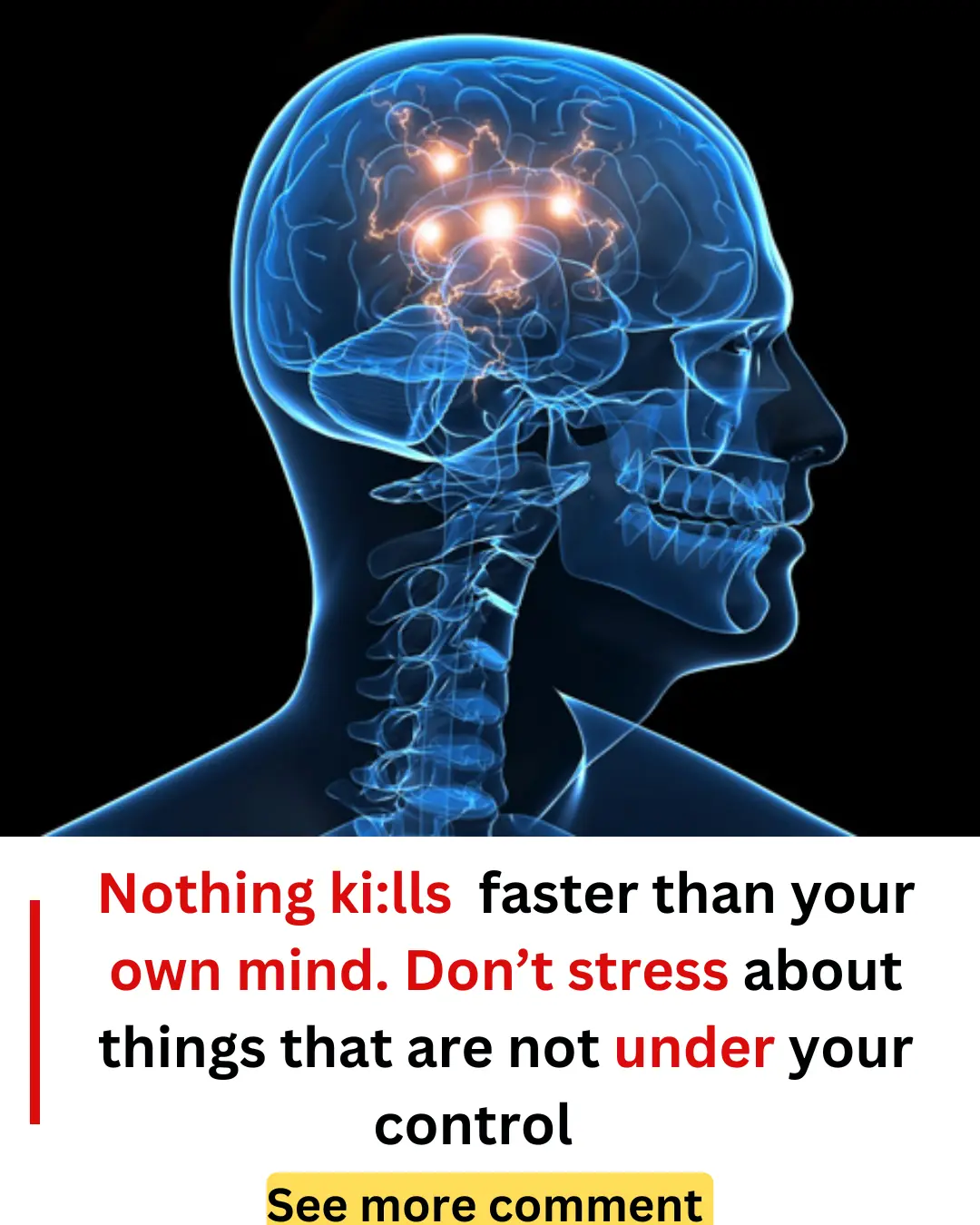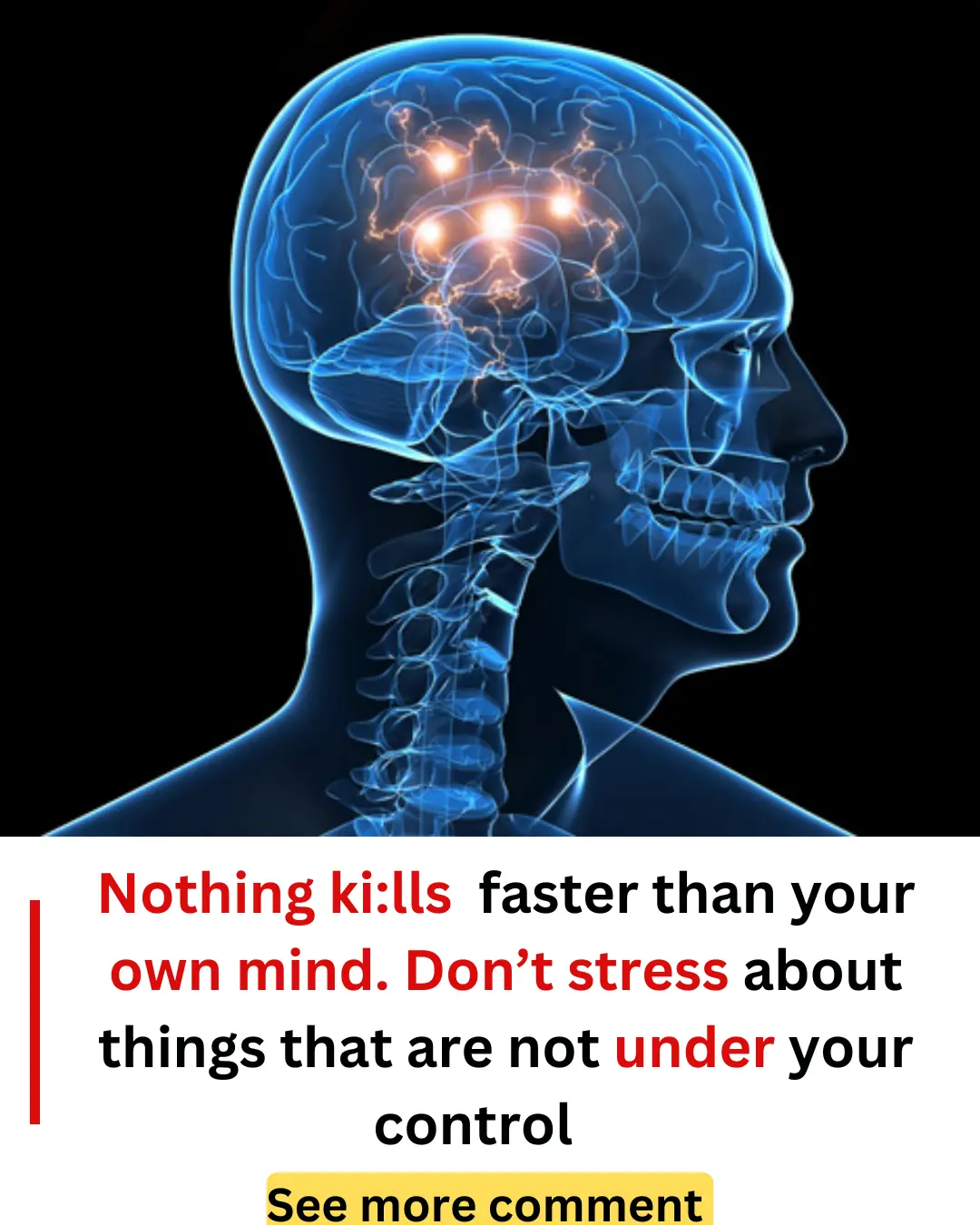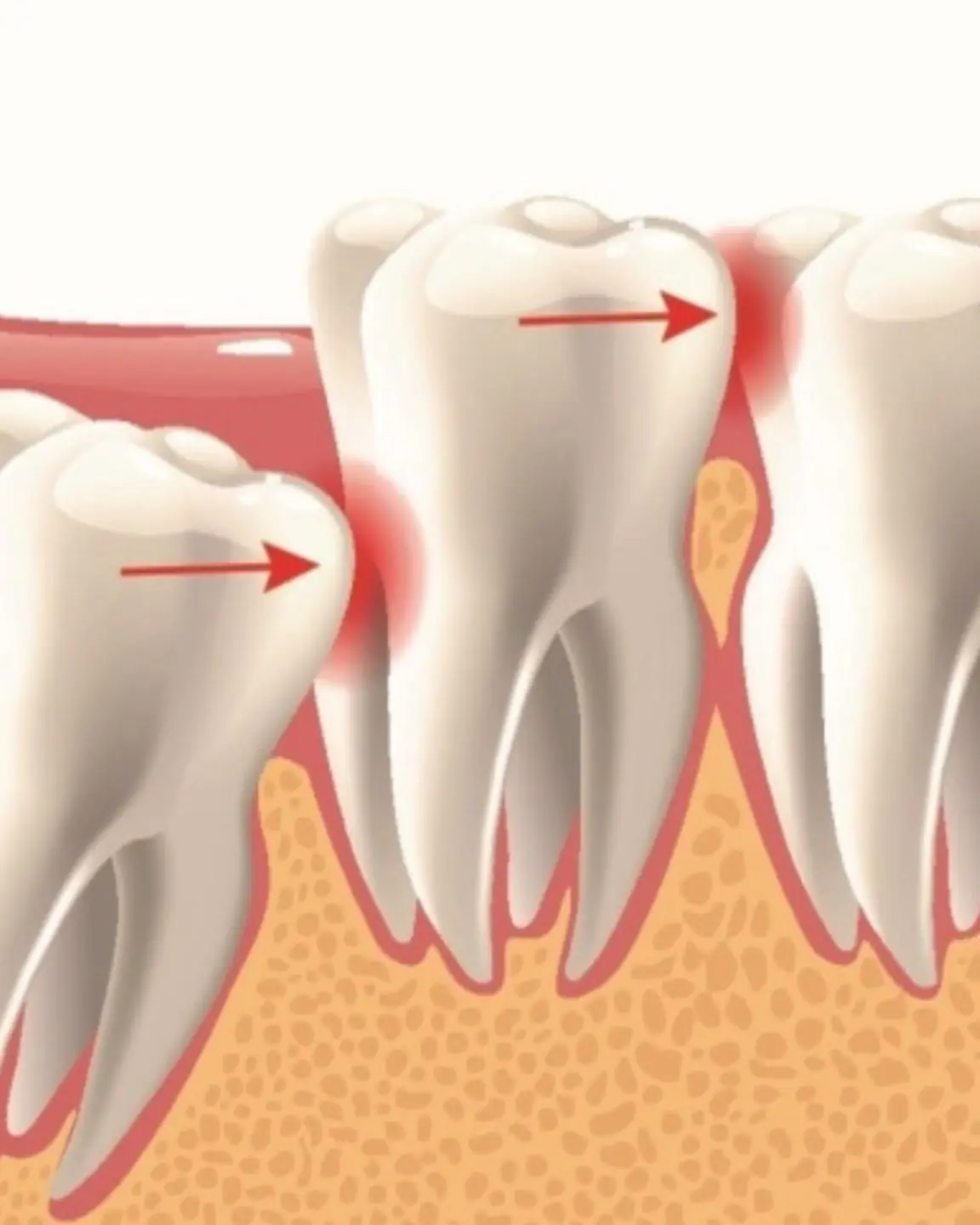
Nothing ki:lls faster than your own mind. Don’t stress about things that are not under your control

Musculoskeletal system
When the body is stressed, muscles tense up. Muscle tension is almost a reflex reaction to stress—the body’s way of guarding against injury and pain.
With sudden onset stress, the muscles tense up all at once, and then release their tension when the stress passes. Chronic stress causes the muscles in the body to be in a more or less constant state of guardedness. When muscles are taut and tense for long periods of time, this may trigger other reactions of the body and even promote stress-related disorders.
For example, both tension-type headache and migraine headache are associated with chronic muscle tension in the area of the shoulders, neck and head. Musculoskeletal pain in the low back and upper extremities has also been linked to stress, especially job stress.
Millions of individuals suffer from chronic painful conditions secondary to musculoskeletal disorders. Often, but not always, there may be an injury that sets off the chronic painful state. What determines whether or not an injured person goes on to suffer from chronic pain is how they respond to the injury. Individuals who are fearful of pain and re-injury, and who seek only a physical cause and cure for the injury, generally have a worse recovery than individuals who maintain a certain level of moderate, physician-supervised activity. Muscle tension, and eventually, muscle atrophy due to disuse of the body, all promote chronic, stress-related musculoskeletal conditions.
Relaxation techniques and other stress-relieving activities and therapies have been shown to effectively reduce muscle tension, decrease the incidence of certain stress-related disorders, such as headache, and increase a sense of well-being. For those who develop chronic pain conditions, stress-relieving activities have been shown to improve mood and daily function.
Respiratory system
The respiratory system supplies oxygen to cells and removes carbon dioxide waste from the body. Air comes in through the nose and goes through the larynx in the throat, down through the trachea, and into the lungs through the bronchi. The bronchioles then transfer oxygen to red blood cells for circulation.
Stress and strong emotions can present with respiratory symptoms, such as shortness of breath and rapid breathing, as the airway between the nose and the lungs constricts. For people without respiratory disease, this is generally not a problem as the body can manage the additional work to breathe comfortably, but psychological stressors can exacerbate breathing problems for people with pre-existing respiratory diseases such as asthma and chronic obstructive pulmonary disease (COPD; includes emphysema and chronic bronchitis).
Some studies show that an acute stress—such as the death of a loved one—can actually trigger asthma attacks. In addition, the rapid breathing—or hyperventilation—caused by stress can bring on a panic attack in someone prone to panic attacks.
Working with a psychologist to develop relaxation, breathing, and other cognitive behavioral strategies can help.
Cardiovascular system
The heart and blood vessels comprise the two elements of the cardiovascular system that work together in providing nourishment and oxygen to the organs of the body. The activity of these two elements is also coordinated in the body’s response to stress. Acute stress—stress that is momentary or short-term such as meeting deadlines, being stuck in traffic or suddenly slamming on the brakes to avoid an accident—causes an increase in heart rate and stronger contractions of the heart muscle, with the stress hormones—adrenaline, noradrenaline, and cortisol—acting as messengers for these effects.
In addition, the blood vessels that direct blood to the large muscles and the heart dilate, thereby increasing the amount of blood pumped to these parts of the body and elevating blood pressure. This is also known as the fight or flight response. Once the acute stress episode has passed, the body returns to its normal state.
Chronic stress, or a constant stress experienced over a prolonged period of time, can contribute to long-term problems for heart and blood vessels. The consistent and ongoing increase in heart rate, and the elevated levels of stress hormones and of blood pressure, can take a toll on the body. This long-term ongoing stress can increase the risk for hypertension, heart attack, or stroke.
Repeated acute stress and persistent chronic stress may also contribute to inflammation in the circulatory system, particularly in the coronary arteries, and this is one pathway that is thought to tie stress to heart attack. It also appears that how a person responds to stress can affect cholesterol levels.
The risk for heart disease associated with stress appears to differ for women, depending on whether the woman is premenopausal or postmenopausal. Levels of estrogen in premenopausal women appears to help blood vessels respond better during stress, thereby helping their bodies to better handle stress and protecting them against heart disease. Postmenopausal women lose this level of protection due to loss of estrogen, therefore putting them at greater risk for the effects of stress on heart disease.
Endocrine system
When someone perceives a situation to be challenging, threatening, or uncontrollable, the brain initiates a cascade of events involving the hypothalamic-pituitary-adrenal (HPA) axis, which is the primary driver of the endocrine stress response. This ultimately results in an increase in the production of steroid hormones called glucocorticoids, which include cortisol, often referred to as the “stress hormone”.
The HPA axis
During times of stress, the hypothalamus, a collection of nuclei that connects the brain and the endocrine system, signals the pituitary gland to produce a hormone, which in turn signals the adrenal glands, located above the kidneys, to increase the production of cortisol.
Cortisol increases the level of energy fuel available by mobilizing glucose and fatty acids from the liver. Cortisol is normally produced in varying levels throughout the day, typically increasing in concentration upon awakening and slowly declining throughout the day, providing a daily cycle of energy.
During a stressful event, an increase in cortisol can provide the energy required to deal with prolonged or extreme challenge.
Stress and health
Glucocorticoids, including cortisol, are important for regulating the immune system and reducing inflammation. While this is valuable during stressful or threatening situations where injury might result in increased immune system activation, chronic stress can result in impaired communication between the immune system and the HPA axis.
This impaired communication has been linked to the future development of numerous physical and mental health conditions, including chronic fatigue, metabolic disorders (e.g., diabetes, obesity), depression, and immune disorders.
Gastrointestinal system
The gut has hundreds of millions of neurons which can function fairly independently and are in constant communication with the brain—explaining the ability to feel “butterflies” in the stomach. Stress can affect this brain-gut communication, and may trigger pain, bloating, and other gut discomfort to be felt more easily. The gut is also inhabited by millions of bacteria which can influence its health and the brain’s health, which can impact the ability to think and affect emotions.
Stress is associated with changes in gut bacteria which in turn can influence mood. Thus, the gut’s nerves and bacteria strongly influence the brain and vice versa.
Early life stress can change the development of the nervous system as well as how the body reacts to stress. These changes can increase the risk for later gut diseases or dysfunctioning.
Esophagus
When stressed, individuals may eat much more or much less than usual. More or different foods, or an increase in the use of alcohol or tobacco, can result in heartburn or acid reflux. Stress or exhaustion can also increase the severity of regularly occurring heartburn pain. A rare case of spasms in the esophagus can be set off by intense stress and can be easily mistaken for a heart attack.
Stress also may make swallowing foods difficult or increase the amount of air that is swallowed, which increases burping, gassiness, and bloating.
Stomach
Stress may make pain, bloating, nausea, and other stomach discomfort felt more easily. Vomiting may occur if the stress is severe enough. Furthermore, stress may cause an unnecessary increase or decrease in appetite. Unhealthy diets may in turn deteriorate one’s mood.
Contrary to popular belief, stress does not increase acid production in the stomach, nor causes stomach ulcers. The latter are actually caused by a bacterial infection. When stressed, ulcers may be more bothersome.
Bowel
Stress can also make pain, bloating, or discomfort felt more easily in the bowels. It can affect how quickly food moves through the body, which can cause either diarrhea or constipation. Furthermore, stress can induce muscle spasms in the bowel, which can be painful.
Stress can affect digestion and what nutrients the intestines absorb. Gas production related to nutrient absorption may increase.
The intestines have a tight barrier to protect the body from (most) food related bacteria. Stress can make the intestinal barrier weaker and allow gut bacteria to enter the body. Although most of these bacteria are easily taken care of by the immune system and do not make us sick, the constant low need for inflammatory action can lead to chronic mild symptoms.
Stress especially affects people with chronic bowel disorders, such as inflammatory bowel disease or irritable bowel syndrome. This may be due to the gut nerves being more sensitive, changes in gut microbiota, changes in how quickly food moves through the gut, and/or changes in gut immune responses.
News in the same category


Boost Your Stem Cells Naturally: The Secret to Longevity and Regeneration

4 types of vegetables that cancer cells fear the most, doctors remind: eating a little bit often is good for your health

9 types of fruits rich in cassava to add to your diet

Tofu is delicious and nutritious, but these 5 groups of people should not eat it

Nothing ki:lls faster than your own mind. Don’t stress about things that are not under your control

There Are Three Types of Vegetables You Should Never Eat

Just Think About How Many of Them You've Actually Ingested

Why Am I Gaining Weight on an 'Eat Clean' Diet?

2 Types of Fruits with the Least Pesticide Residues in the Market: The Number 1 is Adored by Many People

3 Types of Vegetables Richer in Calcium Than Milk: Eating Them Regularly Helps You Stay Healthy Inside and Look Beautiful Outside

Stroke Isn’t So Scary If You Know This: A Simple Habit for Healthy Blood Vessels

Impacted or crooked wisdom teeth - not only cause pain and discomfort but can also cause many dangerous complications

Bumpy skin without itching - do not ignore it because this is a sign of 8 dermatological diseases

Only 3 Steps For Tomato Home Remedy That Are Best Fit Your Glowing Skin

Discovering the Nutritional Power of Broccoli Leaves: Benefits, Uses, and More

The Secret Power of Lemons to Reduce Varicose Veins Naturally

You will definitely always carry a lemon with you

Doctor points out signs of 'secret' d.i.s.ease in women

Ever tried garlic before bed
News Post

Patriotism is found in the freedom to choose, not in forced tradition

Deadly Nightshade Atropa Belladonna The Mysterious and Toxic Plant with a Dark History

Boost Your Stem Cells Naturally: The Secret to Longevity and Regeneration

The Power of Onions: A Natural Boost for Prostate Health

Only boys understand

How many boxes are there on the truck

4 types of vegetables that cancer cells fear the most, doctors remind: eating a little bit often is good for your health

9 types of fruits rich in cassava to add to your diet

Tofu is delicious and nutritious, but these 5 groups of people should not eat it

Should You Wash Eggs Before Storing Them in the Fridge?

Who Is the Alien on the Subway?

There Are Three Types of Vegetables You Should Never Eat

Can you see it?

Just Think About How Many of Them You've Actually Ingested

Place a Garlic Bulb at the Head of Your Bed: Its 'Golden' Benefits Will Make Anyone Who Reads This Want to Try It

Why Am I Gaining Weight on an 'Eat Clean' Diet?

2 Types of Fruits with the Least Pesticide Residues in the Market: The Number 1 is Adored by Many People

3 Types of Vegetables Richer in Calcium Than Milk: Eating Them Regularly Helps You Stay Healthy Inside and Look Beautiful Outside
